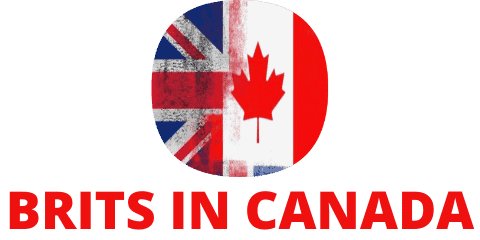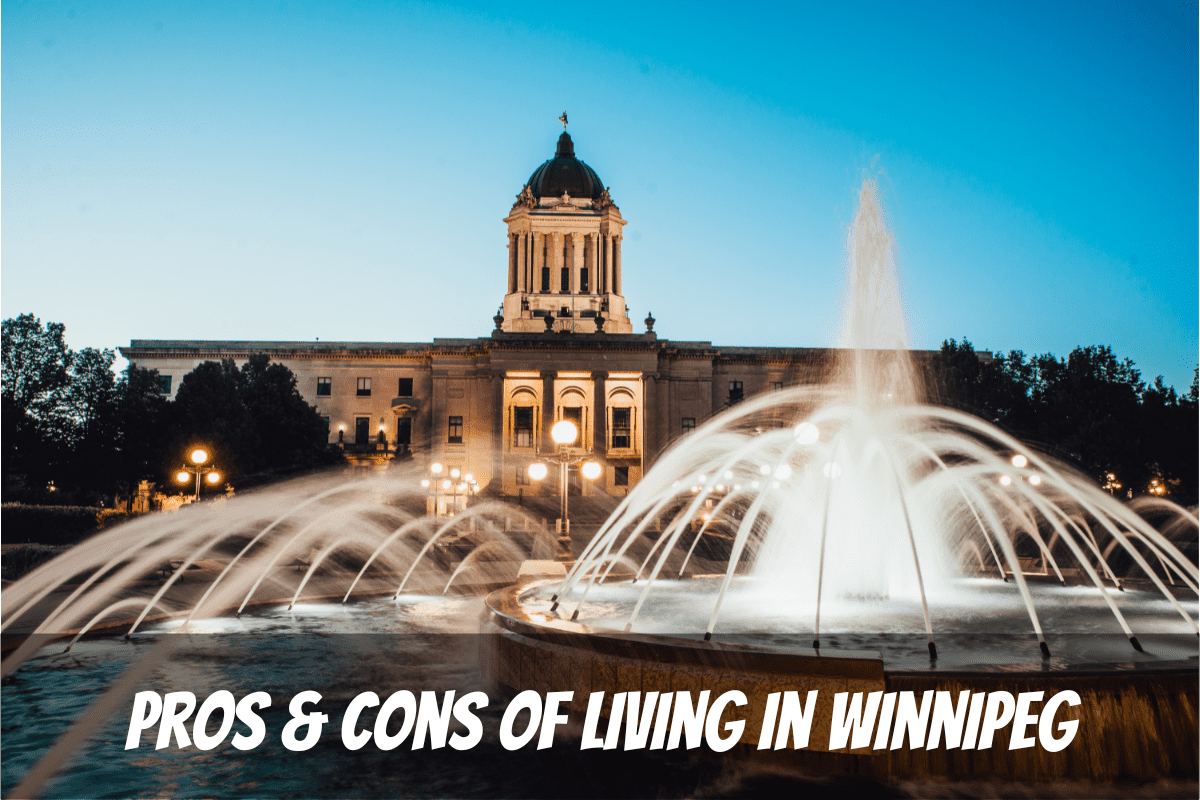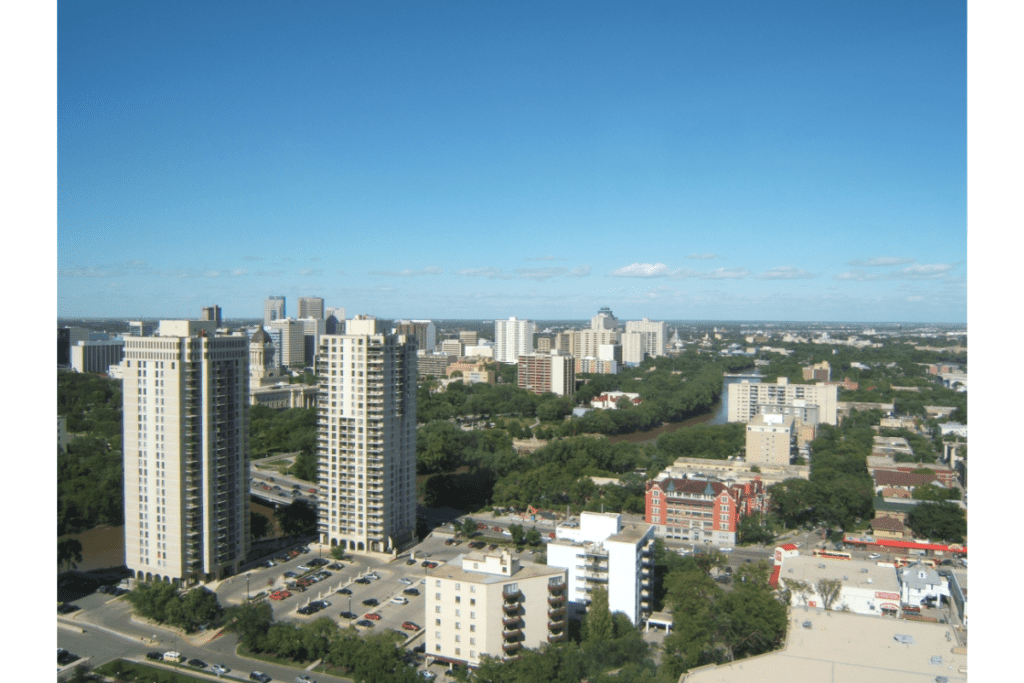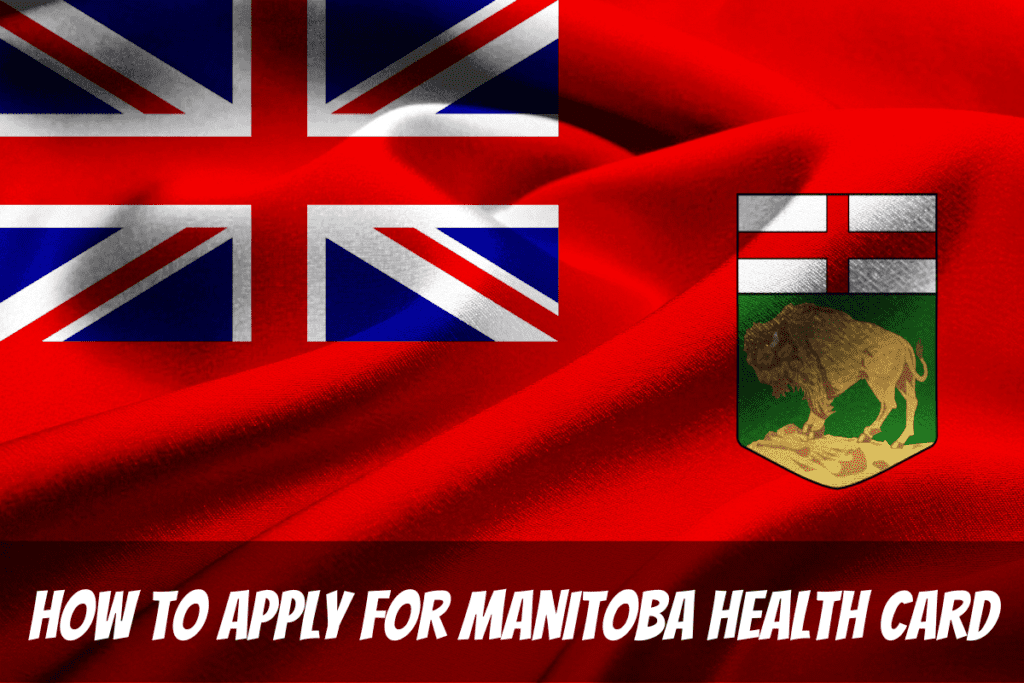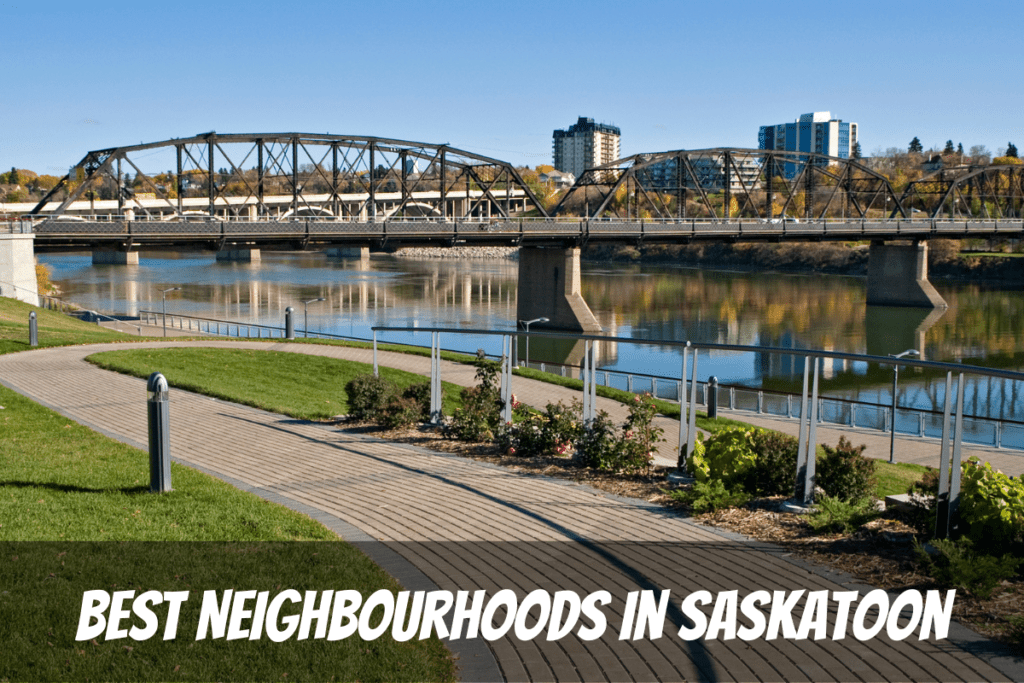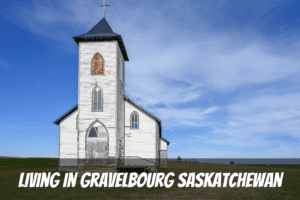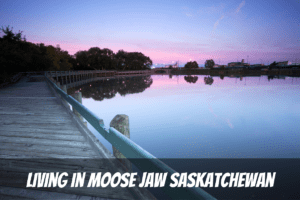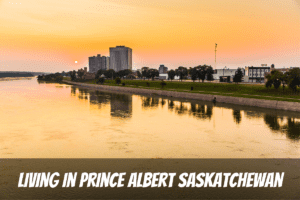Living in Winnipeg may not be the most obvious choice for those considering moving to Canada or relocating within Canada. However, low housing prices, a sunny climate, and a strong Provincial Nominee Program mean that living in Winnipeg is a popular choice for new immigrants.
When planning our move to Canada (some 17 years ago), Winnipeg made it to our final cut of three cities. We researched it extensively, including a one-week visit to the city and its surrounding areas.
Winnipeg – The Facts
Winnipeg is the capital city of the province of Manitoba. It is Canada’s 6th largest city, Manitoba’s largest city, and home to over 50% of the province’s population.
| Winnipeg | |
|---|---|
| Province | Manitoba |
| Population 2021 Census | 749,607 |
| Population Growth 2016/2021 | 6.30% |
| Population Born in UK | 7,750 |
| Time Zones | CST (UTC -6) |
| Elevation | 239m |
| Ave Cost Real Estate Jan ’22 | $331,300 |
| Sales Tax | 5%GST + 7%RST |
| Prov Inc Tax Low Band* | 10.80% |
| Prov Inc Tax High Band* | 14.50% |
| Crime Severity Index 2020** | 121.9 |
| Violent Crime Severity Index 2020** | 165.0 |
*Note: Provincial Income Tax is Paid in Addition to Federal Income Tax
** Canadian Ave 73.4 & 87.0 (Lower is Better). Living In Winnipeg.
Where Is Winnipeg?
Winnipeg sits at the Eastern end of the Canadian prairies. It is very close to the US border (just 95km north of Minnesota) in the very centre of Canada.
The heart of the city is the meeting point of the Assiniboine and Red Rivers, an area known as The Forks. Winnipeg lies at the bottom end of the Red River Valley flood plain, and, as you would expect from a prairie city, it is very flat.
To the north of Winnipeg, the surrounding areas are forested and known for their lakes. The city takes its name from Lake Winnipeg, which is one of the largest lakes in Canada at more than 400km long.
What Is The Culture Of Winnipeg?
Winnipeg has shown consistent population growth in recent years due to the success of Manitoba’s Provincial Nominee Program for immigrants.
This led to a diverse culture, with around 25% of Winnipeg’s current population being born outside of Canada. More than half of recent immigrants are from Asia (especially Southeast Asia), with around one-quarter from Europe.
Winnipeg has a large Aboriginal population compared to other cities, currently a little over 10%, and this population is still growing.
What Is The Weather Like In Winnipeg?
Winnipeg has a well-deserved reputation for brutally cold winters. The average January temperature is minus 16 degrees centigrade, with strong winds regularly adding a wind chill of up to minus 40 degrees centigrade.
Summers are hot and humid, and thunderstorms are common in the spring and summer, sometimes bringing tornadoes.
However, the good news is that Winnipeg is one of the sunniest cities in Canada, averaging around 6.5 hours of sunshine per day.
Historically, Winnipeg’s position on a flood plain has led to major flooding issues during the snowmelt season. The construction of the Red River Floodway and flood control dikes means that this is largely under control now, although a threat does remain in some areas.
| Winnipeg | Toronto | |
|---|---|---|
| Annual Rainfall (mm) | 419 | 714 |
| Annual Snowfall (mm) | 114 | 122 |
| Ave Hours Sunshine/Day | 6.5 | 5.7 |
| Ave Jan Temp (DegC) | -16 | -4 |
| Ave July Temp (DegC) | 20 | 22 |
What Is The Cost Of Living In Winnipeg?
Winnipeg’s low cost of living is one of the main attractions for new immigrants to Canada and also for people looking to escape the outrageous cost of housing in cities such as Toronto and Vancouver.
The main benefit is the availability of affordable housing. The average house price in Winnipeg is well under half the national average, with average housing prices standing at almost a quarter of those in Toronto.
Very often, lower living costs go hand in hand with lower income, but the average income for people living in Winnipeg is only slightly lower than the national average in Canada.
For those looking to study, you will find tuition costs are also lower than at many other universities in Canada.
Does Winnipeg Have A Strong Economy?
Living in Winnipeg exposes you to a very diverse economy that has grown steadily in recent years. The population growth has led to the fast expansion of residential areas on the south side of the city and a resulting building and real estate boom.
It is the political centre of Manitoba, the heart of the Canadian grain industry and home to the Canadian Royal Mint, producing all of Canada’s coinage.
Winnipeg also serves the mining communities north of the city. It is a major financial centre and home to many industries, such as telecommunications, manufacturing and IT.
Does Winnipeg Have Good Transport Connections?
Winnipeg Transit operates buses within the city, and they are very affordable. However, the transit system is quite limited and doesn’t compare well to other Canadian cities.
This is partly because its transit has failed to keep up with the rapid growth of the city. It may also be because its population prefers the warmth and comfort of their own vehicles during the cold winter.
On the plus side, Winnipeg is a transport hub for central Canada with surprisingly good transport connections to the rest of the country.
The Trans-Canada Highway passes through the city, and Winnipeg also lies on the main Viarail passenger train line, running between Vancouver and Toronto. Another Viarail line runs north from Winnipeg to Churchill.
Winnipeg is also a freight rail hub served by several freight railway lines, including the Canada Pacific Railway line.
More than 4 million passengers pass through Winnipeg International Airport each year (pre-Covid). Around 15% of these flights are international, mainly to the US, Mexico and the Caribbean.
What Outdoor Activities Can I Enjoy When Living In Winnipeg?
Winnipeg has more green space than many Canadian cities, with a great system of parks. This includes Assiniboine Park, which is also home to Assiniboine Park Zoo.
The parks are popular with walkers and joggers in the summer but also provide a network of groomed cross-country skiing trails in the winter.
The river trails within the city are also popular with walkers and joggers during the warmer months. In the winter, many areas of the rivers (and nearby lakes) freeze, providing opportunities for skating. Several rinks are set up in The Forks area each winter.
Easy access to the surrounding lakes and forests means that many people escape the city for weekends in the summer, where activities include camping, hiking, boating and fishing.
Cross-country skiing has already been mentioned, but there are also a number of downhill ski resorts which are easily accessible from the city.
The closest is Springhill Resort which is just 15 minutes from downtown, and Stony Mountain Ski Area (popular with snowboarders), a 40-minute driver north of the city.
The most popular downhill resort, which is suitable for all ski levels, is the Holiday Mountain Resort, which is around a 2-hour drive southwest of Winnipeg.
Are You Planning A Move To Canada?
Are you wondering whether to make the move and have endless questions?
Do you want to know how much a medical radiation technologist earns, what the best neighbourhoods in Ottawa are, or where to find the best fish n chips in Guelph?
We have the answers to these and many more questions.
Does Winnipeg Have Good Entertainment And Nightlife?
As with most large cities, living in Winnipeg means you will have a lively night scene. The downtown areas, including The Forks area and the Exchange District, offer many options for eating and drinking out and for dancing and nightclubbing.
If you enjoy eating out, then the multicultural nature of the city means that there is a wide range of cuisines on offer throughout the city.
For those interested in the arts, venues include the Centennial Concert Hall and the Manitoba Theatre Centre. The city is home to the Winnipeg Symphony Orchestra, The Manitoba Opera and the Royal Winnipeg Ballet.
A major event each year is Folklorama, a multicultural festival offering a host of shows and literally thousands of entertainers.
What Professional Sports Teams Does Winnipeg Have?
The two highest-level professional teams are the Winnipeg Jets, who play in the National Hockey League (NHL) and the Winnipeg Blue Bombers, who play in the Canadian Football League (CFL).
Those living in Winnipeg are particularly proud of the Blue Bombers, who have consistently been one of the best teams in the league in recent years. Most recently, they won the Grey Cup in 2021 and also in 2019.
If you are a soccer fan (note “football” in Canada refers to American football), then you can watch Valour FC compete in the Canadian Premier League. And for baseball fans, your team would be the Winnipeg Goldeyes, who play in the American Association of Professional Baseball league.
For non-professional sports, there are numerous university teams covering a wide range of sports.
What Are The Best Neighbourhoods In Winnipeg In 2023?
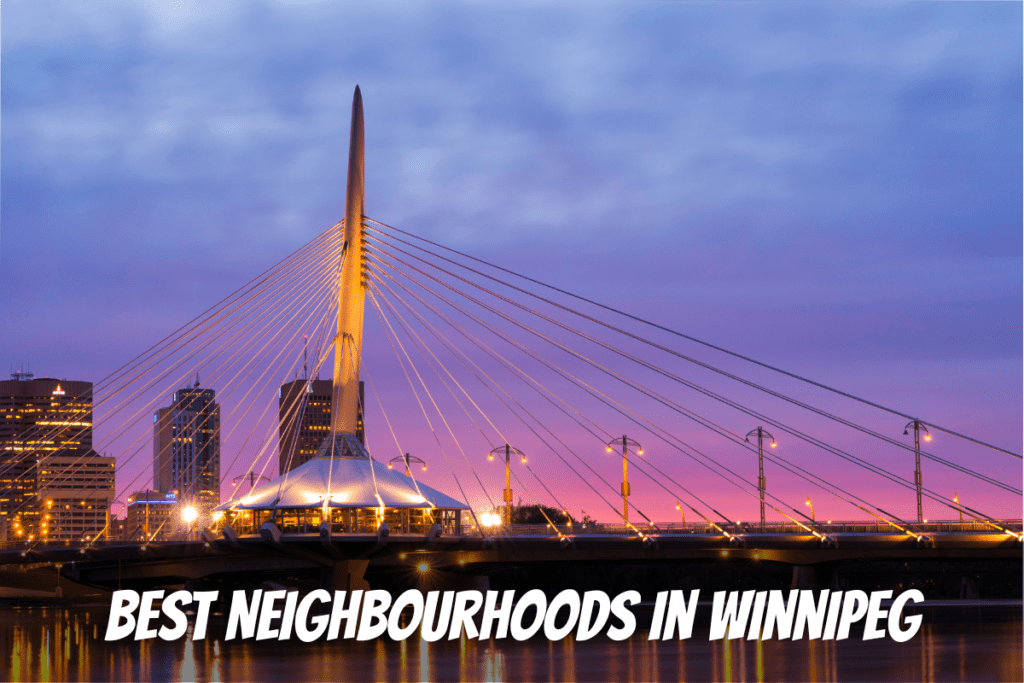
If you are looking for the best neighbourhoods to live in, then Remax in Winnipeg recently drew up a list of the most livable neighbourhoods in Winnipeg. Their top 3 recommended neighbourhoods were River Heights, Norwood Flats and Osborne Village.
The downtown districts of Winnipeg are centred around The Forks area where the Red and Assiniboine Rivers meet.
Historically the most significant downtown area was the Exchange District. This was originally the main trading area of Winnipeg, and today is a designated National Historic Site. The other main downtown districts are Central Park and Chinatown.
The downtown area is relatively compact, covering around 3 square kilometres. Winnipeg’s suburbs then extend outwards from the downtown area in all directions.
In the following sections, we discuss some of the best neighbourhoods in Winnipeg for you to consider.
Exchange District
The name “exchange district” suggests that this region is one of the most dynamic and prosperous in all of Winnipeg. Indeed, it is home to several of Winnipeg’s most prominent citizens. The abundance of historic buildings in the District has also earned it the nickname “Chicago of the North,” and the District’s beauty and prestige have helped it become a popular location for those living in Winnipeg.
Westdale
With so many brand-new apartment complexes being built in the area, Westdale is ideal for those looking for their first home. This trendy part of Winnipeg has been attracting a growing number of young professionals in recent years because of its low housing costs and excellent proximity to public transportation.
Crescentwood
Situated southwest of the central business district, Crescentwood is one of Winnipeg’s most desirable residential areas. The commute downtown from Crescentwood takes about ten to twelve minutes. In addition, it is an attractive area, making it appealing to young and old alike.
Although primarily residential, there are several chic spots to eat and shop nearby. The neighbourhood’s aesthetic value stems from its architectural variety, groomed yards, excellent schools, and pleasant parks.
Fort Garry
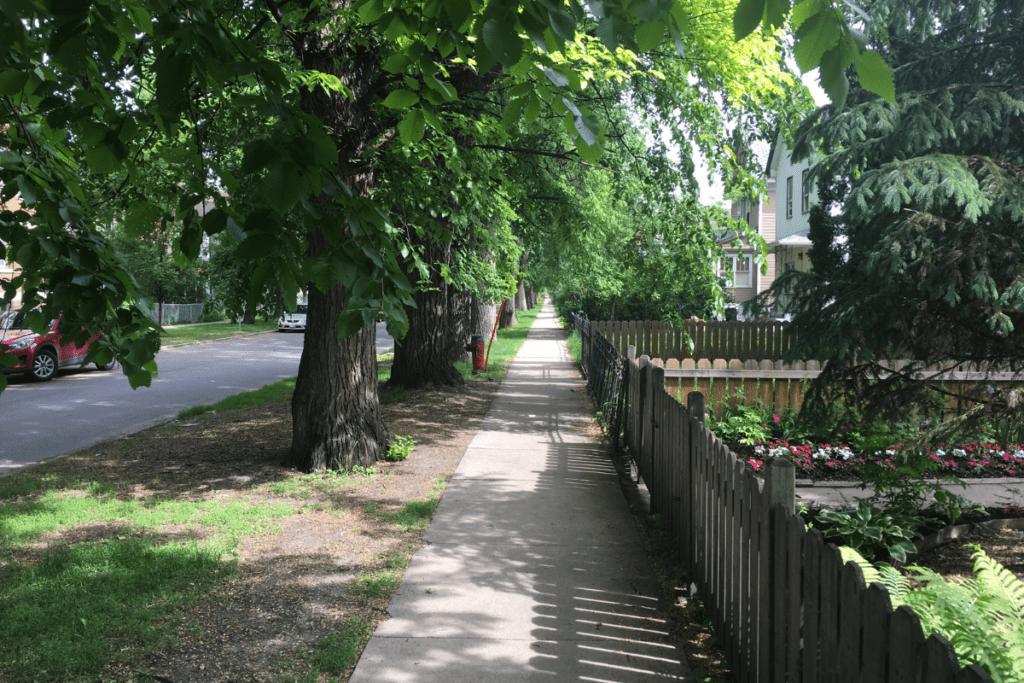
The University of Manitoba is located in Fort Garry, and the area is often bustling with people enjoying the many cultural, athletic, and recreational opportunities available. Because of its proximity to the renowned University of Manitoba and its excellent sports facilities, this is one of the best neighbourhoods in Winnipeg for students.
Riverview
Riverview, Winnipeg’s “village” neighbourhood, is located on a bend of the Red River. The region features the prestigious Riverview Health Centre. With many apartments and condo complexes designed for rent, Riverview is among the nicest neighbourhoods in Winnipeg.
Osborne Village and the city core of Winnipeg are within easy driving distance from this area, where you will find most of the city’s shops, restaurants, and other points of interest. Many young people also call this neighbourhood home because of its abundance of trendy, large boutiques.
Tuxedo
Winnipeg’s “oh la la” neighbourhood is called Tuxedo. This beautiful suburban area is home to enormous mansions, verdant landscaping, and stunning character homes. A posh residential area called “Tuxedo Park” was the original vision for Tuxedo in the early 20th century.
The Tuxedo district of Winnipeg is highly recommended because of the abundance of parks and variety of recreational activities available there. This area offers a wide variety of stress-free and kid-friendly recreational opportunities. Additionally, the quality of life in Tuxedo is enhanced by the abundance of local conveniences such as cafes, restaurants, etc.
Charleswood
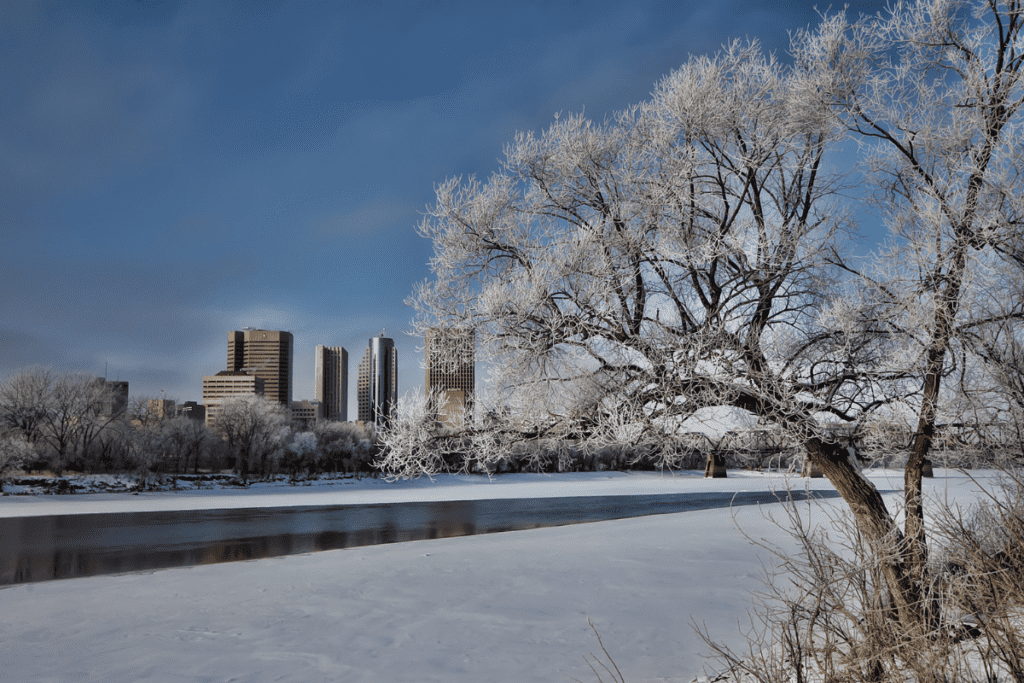
Charleswood is an urban neighbourhood with a touch of the country. It is one of the best neighbourhoods in Winnipeg for people who want to be close to nature without being too far from the city center.
As a semi-urban area, Charleswood is home to many attractive and entertaining recreational opportunities. Hikers, ornithologists, and other nature enthusiasts from outside the area frequently visit Charleswood. The 6.5-kilometre-long Harte Trail, located on a disused railroad corridor, is also considered to be the “home turf” of this neighbourhood. Moreover, this area is pleasant and secure for residents.
St. James
St. James is a historic and tranquil district in the heart of Winnipeg. St. James has more retailers and restaurants than any other area in Winnipeg.
Shopping, dining, and a variety of charming neighbourhoods may all be found here, with the pricier areas clustered along the Assiniboine River. The more affordable ones are to the north, where parks dot the otherwise quiet streets.
Family-friendly activities abound in the area’s strip malls. At the same time, history lovers will enjoy visits to sites like “Grant’s Old Mill” and “The Living Prairie Museum,” a massive area that protects the region’s native flora and features walking trails and an abundance of animals. In addition, “Assiniboia Downs,” a horse racing track, and the summertime Red River Ex are both located here.
What Are The Pros And Cons Of Living In Winnipeg?
Pros Of Living In Winnipeg
- Affordable housing
- Strong Provincial Nominee Program
- High sunshine hours
- Variety of outdoor activities
- Good nightlife
- Great for art lovers
- Range of cuisines
- Good rail connections
- International airport
- Close to lakes
- Strong & varied economy
- NHL and CFL teams
Cons Of Living In Winnipeg
- Cold winters and humid summers
- High crime rates
- Lots of mosquitoes
- Limited city Transit
FAQ – Living In Winnipeg
Sources of data Statistics Canada & Canadian Real Estate Association
